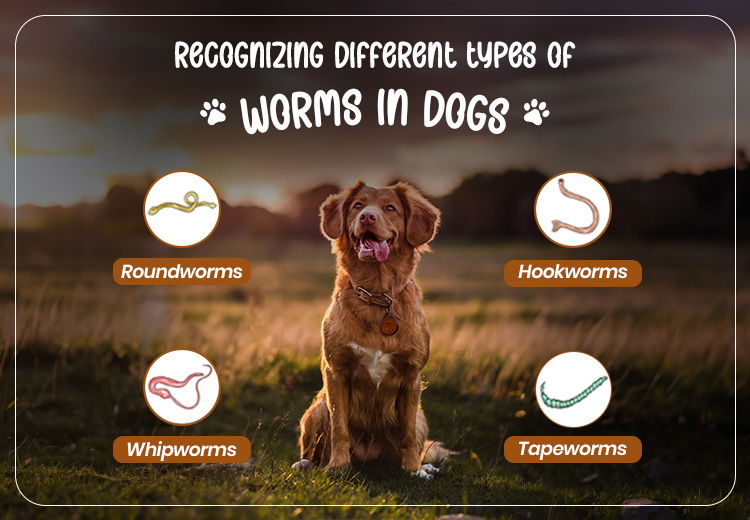 Mar 07, 2025
Mar 07, 2025

Intestinal worms live inside a dog’s body and cause health issues ranging from mild to severe. Dogs can get a variety of gastrointestinal worms such as roundworms, hookworms, tapeworms, etc. either from their environment or through their mother. Being a responsible dog parent, we always want to make sure that our furballs stay in the best of their health, hence preventing worm infections becomes a crucial part of pet parenting.
In this blog, we will discuss everything about these worms so that you can recognize, treat and prevent them before they cause a problem for your little bundle of joy.
Let’s get started!
Let’s have a look at the different types of worms found in dogs:
These tiny, red-colored, thread-like worms are less than an inch long and usually stay in the dog’s small intestine. Since they remain hooked onto the intestinal wall and feed on the dog’s blood, they can cause anemia, weight loss and bloody stool. Dogs can get infected by hookworms either by ingesting the eggs or larvae from contaminated soil.
Having a spaghetti-like appearance, these white-colored worms are three to four inches long, reside in the intestinal walls and feed on partially digested food. Roundworm infections can lead to diarrhea, vomiting and digestive issues. Roundworms can be transmitted by ingesting infected stool or soil. Moreover, newborn puppies can get hookworms through their mother’s placenta or infected breast milk.
Long, white-colored, whip-like structured worms, these parasites attach themselves to the cecum and dog’s large intestine. These intestinal dwellers can survive up to 5 years in the environment, thereby increasing the chances of reinfections. Whipworms can be transmitted through infected feces and contaminated soil, food or water. Common signs include weight loss, lethargy, a pot-bellied appearance, etc.
Tapeworms are flat, white or pale yellow-colored, ribbon-like worms that burry themselves on the dog’s digestive lining and primarily show no symptoms of infections. Tapeworms can spread to dogs when they ingest flea-carrying tapeworm eggs.
Here are a few signs that might help you detect intestinal worm infestations:
Let’s discuss the most effective and simple ways through which you can keep your little one protected from intestinal worms:
There you have it! There were different types of worms, symptoms and how you can protect your dog. Walking the extra mile for your beloved companion will help you keep them healthy and happy. So, always be vigilant and seek veterinary help if you notice any sign of discomfort.